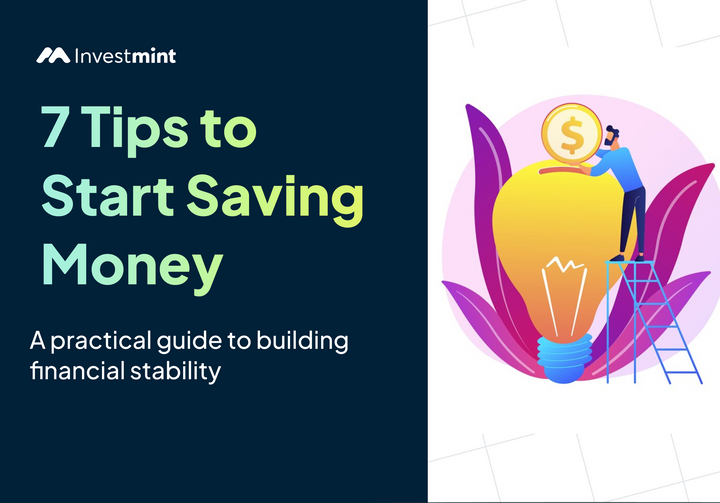6 Biggest Stock Market Scams That Shook The Indian Investors
Trading has always been subject to market risk, but whenever a stock market scam happens. It shakes the community to the core. Read more here.

What's one thing you don’t want to ever happen again in the stock markets?
No matter how small a scam, it can shake the trust and wealth of investors around the globe. It can impact the trust of FIIs, and it takes a massive hit on any economy in the world, especially if it’s a developing country.
As the title suggests, we will discuss one of the biggest stock market scams that shook India's economy and its investors' trust.
Harshad Mehta Scam
The Harshad Mehta scam was a financial fraud that took place in 1992. Harshad Mehta, a Mumbai stockbroker, used a banking system loophole to manipulate the stock market.
He took advantage of the ready-forward (RF) deals, which allowed banks to borrow money from the interbank market for short periods. Mehta used this loophole to borrow money from banks, which he then used to buy shares in the stock market, inflating their prices.
He also manipulated the share prices of certain companies by buying large quantities of their shares and creating a demand for them. Eventually, the scam was exposed, and the stock market crashed, causing investors to lose over Rs. 4,000 crores.
The CRB Scam
The CRB scam took place in 1995 and was orchestrated by CR Bhansali, the owner of CRB Capital Markets.
He was known for his flashy lifestyle and used investors' money to carry out unauthorised transactions in the stock market. He created fake accounts and manipulated stock prices to make a profit. Essentially, he was using other people's money to get rich quickly.
The stock market crashed when the scam was eventually exposed, causing investors to lose over Rs. 1,200 crores. Bhansali was arrested, and the company went bankrupt. Many investors lost their life savings, and some even committed suicide due to financial losses.
The UTI Scam
UTI scam was a financial disaster that rocked the Indian stock market in 2001. The scam involved one of India's largest mutual fund companies, Unit Trust Of India (UTI). Irregularities were found in the allocation of shares during various companies' Initial Public Offerings (IPOs).
The scam was allegedly carried out by several prominent individuals, including stockbrokers and UTI officials, who colluded to manipulate the allotment of shares. They used fictitious names and manipulated the system to get a larger allotment of shares.
The scam was eventually uncovered when SEBI, the regulatory body for the Indian stock market, launched an investigation. The investigation revealed that UTI officials had favoured certain brokers and investors over others during the IPOs. The scam caused a loss of over Rs. 5,000 crores to investors.
In response to the scandal, the government established the Asset Management Company (AMC) of UTI in 2003 to oversee the management of UTI's assets. This move helped to restore confidence in the UTI and the mutual fund industry as a whole.
The Satyam Scam
The Satyam scam was one of the biggest corporate scandals in India's history, and the story behind it is pretty intriguing.
It all started in 2008 when Ramalinga Raju, the founder and chairman of Satyam Computer Services, confessed to a massive accounting fraud. He admitted to inflating the company's revenue and profits, creating fictitious assets and bank balances, and manipulating the stock price. In other words, he cooked the books and created an illusion of a profitable company when it was actually losing money.
The scam caused a loss of over Rs. 14,000 crores to investors. It wasn't just a financial disaster; it also exacted a human toll. The company's employees, who had nothing to do with the fraud, were left without jobs and a source of income. It was a devastating blow to their livelihoods and their families.
The following investigation revealed that Raju had siphoned off millions of dollars from the company to fund his personal ventures. He was eventually arrested and sentenced to seven years in prison. The government intervened in the scandal's aftermath and appointed a new board to run the company. The board worked tirelessly to restore the company's reputation and compensate the affected investors and employees.
The Sahara Scam
The Sahara scam was another massive financial scandal that shook the Indian financial system in 2011. It involved the Sahara Group, a conglomerate interested in real estate, finance, and media.
The scam was quite complex, but it involved the sale of financial products to millions of small investors without the required regulatory approval. The Sahara Group had launched two investment schemes, Sahara India Real Estate Corporation Limited (SIRECL) and Sahara Housing Investment Corporation Limited (SHICL), which were marketed as bonds to raise funds from the public.
However, the Securities and Exchange Board of India (SEBI) found that the Sahara Group had raised nearly Rs. 24,000 crore ($3.4 billion) through these schemes, which were in violation of SEBI's rules and regulations. The Sahara Group had not registered these schemes with SEBI and did not comply with other regulatory requirements.
NSE Colocation Scam
The NSE Colocation Scam took place in 2017. The National Stock Exchange (NSE) was accused of giving preferential treatment to some brokers by allowing them to access its servers faster than others.
The NSE colocation scam involves allegations that the exchange provided preferential treatment to a few high-frequency trading (HFT) firms, which enabled them to gain unfair advantages over other traders.
The colocation facility is a service provided by the NSE that allows traders to place their servers in the exchange's data centre, which is located close to the exchange's trading servers. This enables the traders to receive market data faster than other traders not located in the same place.
The scam came to light in 2015 when an anonymous whistleblower sent a letter to SEBI alleging that the NSE had provided preferential treatment to some HFT firms. Following the letter, SEBI investigated the matter and found the allegations true.
As a result, SEBI fined the NSE Rs. 1,000 crore ($136 million), one of the largest penalties ever imposed on an exchange in India.
Parting thoughts
Nobody wants scams to happen at any point in time. But when they do happen, investors should have faith in the country's governing body and not let emotions get the better of them.
FAQs
Q. How can investors protect themselves from falling victim to financial scams?
Investors can protect themselves from financial scams by doing their due diligence and researching companies and investment opportunities thoroughly before investing. They should also be cautious of promises of high returns or quick profits and seek advice from a qualified financial advisor.
Q. What is the role of regulatory bodies in preventing scams and fraudulent activities in the Indian stock market?
Regulatory bodies such as the Securities and Exchange Board of India (SEBI) monitor and regulate the Indian stock market to prevent scams and fraudulent activities. They set rules and guidelines for companies and traders and investigate any reported irregularities or frauds.
Q. How has the Indian stock market evolved since these scams occurred, and what changes have been made to improve transparency and fairness in the market?
The Indian stock market has evolved since these scams occurred, with increased regulations and oversight to improve transparency and fairness in the market. The SEBI has introduced stricter reporting and auditing standards for companies and has increased penalties for violations of market rules and guidelines.
Q. Can investors recover their losses from these scams, and if so, how?
Investors may be able to recover their losses from these scams through settlements or legal proceedings. However, the amount of recovery will depend on the specifics of the scam and the outcome of any legal proceedings.
Want to receive the next blog in your mail? Click on the 'subscribe' button and receive the next blog in your mail.



